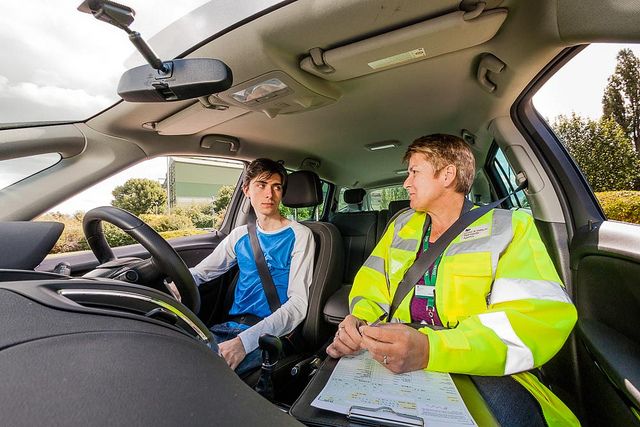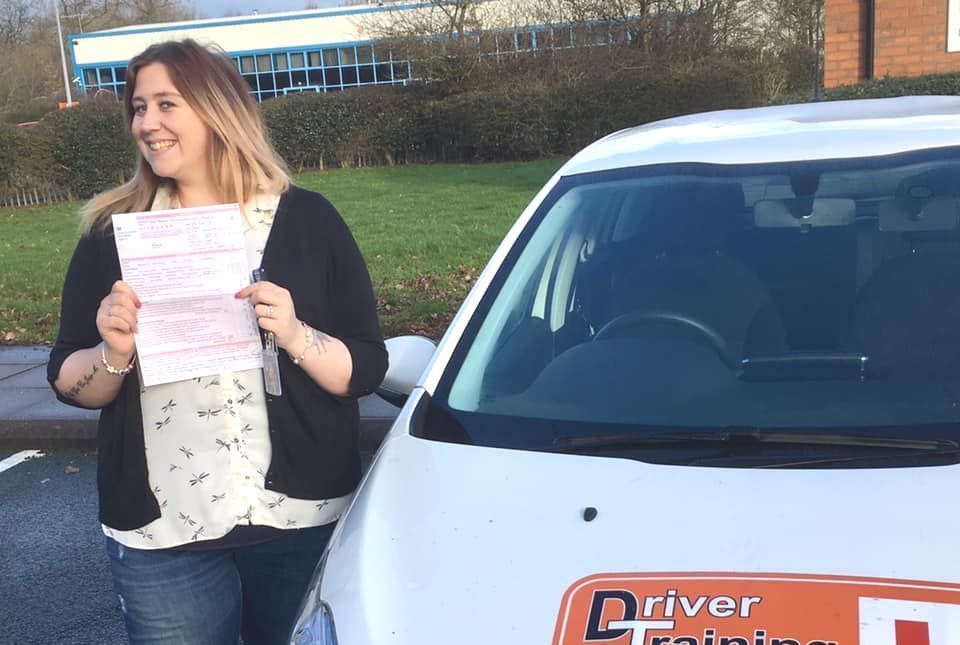ADI Part 3 - Using the correct terms
Was the Technical Information Correct
The Vital Role of Accurate Words and Phrases
Are you on the journey to becoming a driving instructor in the UK? If so, buckle up, because one of the most critical aspects of your training is understanding the significance of using precise terminology when teaching individuals how to drive.In the dynamic world of driving instruction, the words you choose can make all the difference between a safe, effective lesson and a confusing, potentially hazardous one.
Let's explore why mastering the correct terms is paramount in your quest to passing the adi part 3 and adi standards check and becoming a good driving instructor


Clarity Is Important
Clarity Leads to Confidence
Imagine being a novice driver, eager to learn the rules of the road. You're relying on your instructor to provide clear, concise instructions. Using accurate terminology ensures that your students understand exactly what you mean, fostering confidence in their abilities. When learners comprehend the terminology, they're more likely to execute manoeuvres correctly, leading to safer driving practices in the long run.
Here are some misleading teaching phrases that could potentially confuse learner drivers:
Drop The Clutch
"Drop the clutch": This phrase might be interpreted by a learner as really hard to understand. But I’m not carrying a clutch? Instead, instructors should emphasize simple phrases like “Clutch Down” “Press the clutch down”
"Squeeze the brake": This phrase could be misunderstood as Literally getting the brake pedal and somehow squeezing it. Instructors should teach learners to brake gently and progressively, - slightly or fraction more or less - maintaining smooth deceleration.


Clutch Up
"Clutch Up": This phrase might be used if you want the pupil to come off the clutch completely, but many use it when just trying to get the biting point – it would be much better to say “bring the clutch slowly and gently up until you feel the biting point, then hold your foot still”
Go Straight Across It
“Go straight across the roundabout”: Really? Is that really what you want me to do? – This is one of my favourites when training people for the ADI Part 3 or ADI Standards Check! – Of course very few pupils will actually try this, BUT that is because they are having to interpret what you are saying!! – So your pupils are in effect filling in the blanks.
It is much better to say “At the roundabout, Go straight ahead/Follow the road ahead 2nd exit/ 3rd exit…….


Be Aware Of The Car
Be Aware Of: This phrase especially when used on meeting traffic is pointless. Most times it is used to say nothing “Be aware of the car coming towards you” – Well I know it’s there if that’s what you mean? But how do I deal with it?
Turn The Wheel
Steer / Turn / Steer Back / Drop the wheel back / Lock the wheel left / Lose the steering: When turning or emerging a pupil may not turn enough, or turn too much, or not turn back early enough. Very often trainee driving instructors may say “Turn, turn, turn!!” or “Steer Back!”
However this is very vague and to be honest if you say turn the wheel and the pupil oversteers, it is not there fault, they are doing exactly what you have said. Your natural response will be to say “I didn’t mean that much!” – Well in that case, tell me what you do mean!
It is much better to be exact, so it is much better to say “When we turn right into a minor Road, we need to turn the wheel one full turn to the right. As the car comes round into the 11o’clock position, we need to turn one full turn to the left to straighten the wheels.”
Or, when pulling off from the side of the road. “Think of the steering wheel as a clock face. I want you to steer 2 o’clock,10 o’clock then12 o’clock and that will put us in the correct position.”
Then you just need to say that to them at the exact points they need to do it.


Feather the brake
"Feather the brake/clutch": Although experienced drivers may understand this phrase as delicately controlling the brake/clutch pedal, learners might misconstrue it and struggle with inconsistent clutch engagement. Instructors should emphasize precise control and gradual release of the clutch.
"Take your foot off the gas": This phrase might confuse learners if they interpret it as lifting their foot completely off the accelerator pedal, potentially leading to abrupt deceleration. Instructors should clarify the need for gradual throttle reduction when slowing down. “Slightly off the gas/ Fraction less gas”
STOP!!
"Lug the engine": This phrase could be misunderstood as driving at low speeds in high gears, which can strain the engine and lead to poor fuel economy or engine damage. Instructors should emphasize the importance of selecting the appropriate gear for the vehicle's speed and load.
"Stop": When you don’t need your learners to stop instantly try not to use this phrase. Learners might interpret this phrase as forcefully applying the brakes, which can cause the wheels to lock up and the vehicle to skid. Although you mean stop at the junction or stop at the traffic lights, you need to say at the Junction we are going to come up and stop. Instructors should teach learners to brake smoothly and progressively to maintain control.


Go then
"Lets Go": While this phrase might be intended to encourage acceleration, learners often interpret it literally, so for instance if the pupil is going to turn right and the car coming towards them slows down and allows you to cross – on saying “Lets Go” the learners often forget what gear they need to be in and just come straight off the clutch. Very often just stalling in the middle of the road.
Turn Left
"I want you toTurn Left/Right ": Think how your sat nav would give directions. “Take the next road on the left”, “At the end of the road, turn right” – Otherwise if the pupil takes you literally then you are in danger of going into someone’s driveway.
“Pull Up on the Left / Right:” – This one is a bit of fine tuning, If you say to the pupil “pull up on the left” and they do it – What have they done wrong? They presume that you mean now… so they do. It is much better to say “When it is safe to, please pull up on the left” or “I would like you to find somewhere that is safe, legal and convenient to pull up on the left”


What is this junction
"Is it a walking junction or jogging junction?": This phrase is sometimes used to denote the speed on approach to a junction. However it is much easier to say “Is it an open junction or a closed junction?” “
Do we need to stop or do you think we have time to go?” Try to make what you say simple, brief and easy to understand. Also try and make it so the phrase or teaching method is one that can be shown from Driving The Essential Skills book or in most briefing and lesson plan folders.
Rolling Stop
“Nudge Forward": In driving parlance, "nudge" might be used to describe gently tapping or nudging the vehicle forward or backward to adjust its position. However, learners might perceive it as a forceful action, potentially leading to collisions or unsafe driving situations
"Rolling stop": This phrase is sometimes used to describe a situation where a driver slows down but does not come to a complete stop at a stop sign or junction. However, learners might interpret it as a permissible driving manoeuvre rather than recognizing the importance of fully stopping at designated points.


Be Precise
It's crucial for driving instructors to use clear and precise language when teaching learners, avoiding ambiguous or potentially misleading phrases that could lead to confusion or unsafe driving habits.
Make It Simple and Understandable
Standardization Enhances Understanding
In the realm of driving instruction, consistency is key. By adhering to standardized terminology, you ensure that your students receive uniform guidance, regardless of who their instructor may be. This consistency not only simplifies the learning process but also facilitates better communication among instructors and learners alike. Whether it's signalling a turn or adjusting mirrors, using standardized terms creates a common language that transcends individual teaching styles.


Simple Leads To Success
Preparation for Tests and Exams
For many aspiring drivers, passing the driving test is a significant milestone. By teaching with accurate terminology from the outset, you prepare your students for success on their exams. Familiarity with the correct terms not only enhances their performance during the test but also instils a lifelong understanding of essential driving concepts. This foundation serves them well beyond the examination, empowering them to become responsible, skilled drivers.
Professionalism and Credibility
As a driving instructor, you are not just imparting driving skills; you are also representing a profession. Using correct terminology demonstrates your professionalism and expertise in the field. It showcases your commitment to excellence and reinforces your credibility as an instructor. When students recognize your mastery of the language of driving, they are more likely to trust and respect your guidance.
In conclusion, the importance of using the correct terms when teaching people to drive cannot be overstated. From clarity and confidence to prioritizing safety and professionalism, accurate terminology forms the bedrock of effective driving instruction.
As you embark on your journey to becoming a driving instructor in the UK, remember that the words you choose have the power to shape the next generation of drivers. So, buckle up, stay informed, and drive onward with precision and purpose!
Let us Help You In Your Training - Contact Us
Hours
Monday - Friday:
09:00 am - 6:00 pm
Saturday - Sunday:
10:00 am - 3:00 pm